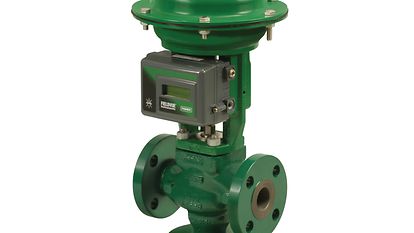How Control Valves Impact Power Effectiveness in Industrial Settings
How Control Valves Impact Power Effectiveness in Industrial Settings
Blog Article

Maximize Energy Financial Savings and Comfort With Advanced Building Automation Controls
In the world of modern-day style and center monitoring, the assimilation of advanced structure automation controls stands as a critical advancement. By using the power of automation, buildings can adjust, react, and develop in means that were once inconceivable.
Power Effectiveness Benefits
Power performance advantages can substantially lower energy consumption and operational prices in structures. By executing energy-efficient practices and innovations, structure owners and operators can accomplish significant cost savings while likewise adding to ecological sustainability. Among the key benefits of improving power performance in buildings is the reduction of energy expenses. Energy-efficient systems, such as innovative building automation controls, can optimize the usage of sources like cooling, lighting, and heating, resulting in reduced energy expenditures gradually.
Additionally, boosted power effectiveness can extend the life-span of structure devices and systems. By operating a lot more efficiently, heating and cooling systems, lighting fixture, and other structure elements experience less damage, causing decreased upkeep and replacement prices. Furthermore, energy-efficient buildings frequently regulate higher residential or commercial property values and rental prices, supplying long-term financial advantages to owners.
In addition, power efficiency can improve owner convenience and productivity. Appropriately regulated indoor settings with optimal illumination and thermal conditions produce an even more pleasant and conducive work area, leading to improved staff member satisfaction and performance. On the whole, the power efficiency benefits related to advanced structure automation controls are diverse, incorporating expense financial savings, environmental stewardship, and occupant wellness.
Enhanced Comfort Control
Enhancing convenience control in structure atmospheres requires an advanced assimilation of innovative automation systems for ideal passenger wellness. By making use of sophisticated structure automation controls, facilities can customize the interior setting to satisfy the specific requirements and preferences of occupants. control valves.
Improved convenience control goes past fundamental temperature level modifications. It includes features such as individualized settings, tenancy sensors, and all-natural light use to develop a responsive and dynamic setting. By including these innovative controls, buildings can not only improve comfort yet additionally enhance power efficiency by maximizing system procedures based upon actual occupancy and usage patterns. Eventually, focusing on resident comfort via sophisticated automation systems brings about a much more enjoyable and healthier interior environment.
Operational Performance Improvements

Additionally, the execution of real-time monitoring and analytics devices makes it possible for building operators to identify power inefficiencies and functional anomalies without delay. By continually keeping track of power use patterns and system performance metrics, changes can be made in real-time to enhance energy usage and guarantee peak functional performance. control valves. In addition, incorporating demand feedback strategies into building automation controls can further improve operational effectiveness by dynamically adjusting power use based upon grid conditions and pricing signals
Indoor Climate Optimization
Effective indoor environment optimization is a fundamental facet of structure automation controls, ensuring residents' convenience and health while taking full advantage of energy financial savings. By making use of innovative sensing units and controls, building automation systems can continuously adjust and monitor temperature, moisture levels, air high quality, and ventilation to produce an ideal indoor environment. Keeping comfortable and regular conditions not only improves resident contentment however likewise boosts productivity and overall wellness.
Interior climate optimization also plays a crucial role in Full Article power effectiveness. By fine-tuning ventilation, home heating, and air conditioning systems based upon real-time information and tenancy patterns, building automation controls can dramatically reduce energy usage - control valves. For instance, implementing methods such as demand-controlled ventilation and thermal zoning can assist lessen power waste while ensuring that each location of the building obtains the essential conditioning.

Lasting Atmosphere Development
Building automation manages not only optimize indoor environment problems for energy efficiency and a knockout post occupant convenience but also lay the structure for creating a lasting setting with calculated management of sources blog and systems. By incorporating innovative building automation modern technologies, such as sensing units, actuators, and intelligent software, facilities can change and check power usage in real-time to decrease waste and reduce their carbon footprint. These systems make it possible for predictive upkeep, identifying possible issues prior to they escalate and maximizing devices efficiency to enhance durability and effectiveness.
Additionally, sustainable setting development expands beyond power management to include water conservation, waste reduction, and interior air high quality improvement. Building automation controls can control water usage, spot leakages, and ensure appropriate garbage disposal practices, adding to overall sustainability efforts. Furthermore, by controlling and keeping an eye on ventilation and filtration systems, these technologies enhance occupant wellness and performance while reducing energy intake related to heating and cooling operations.
Final Thought
In verdict, progressed building automation manages offer considerable benefits in regards to power savings, comfort control, functional performance, indoor climate optimization, and developing a lasting setting. By carrying out these controls, structures can accomplish ideal efficiency while lowering power usage and enhancing passenger convenience. It is evident that the use of advanced automation modern technology is vital in boosting structure efficiency and producing an extra lasting future.
Power performance benefits can considerably reduce power usage and functional prices in buildings. Overall, the power efficiency benefits associated with sophisticated building automation controls are multifaceted, encompassing expense financial savings, environmental stewardship, and occupant well-being.
In addition, incorporating need reaction techniques right into structure automation controls can even more boost functional efficiency by dynamically changing power usage based on grid conditions and rates signals.
Building automation manages not just enhance interior climate conditions for power effectiveness and resident comfort yet additionally lay the structure for producing a sustainable environment through tactical management of resources and systems.In final thought, progressed structure automation regulates deal considerable advantages in terms of power financial savings, convenience control, functional effectiveness, indoor environment optimization, and creating a lasting setting.
Report this page